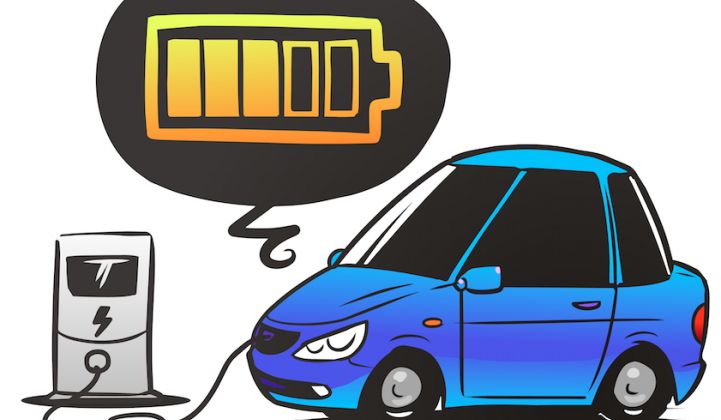Policy developments at the state and local levels provide many reasons to be optimistic about the adoption of electric vehicles.
Much of this optimism emanates from Indianapolis and its forward-thinking mayor, Greg Ballard, a Marine Corps veteran whose passion for electric vehicles (EVs) is prominently featured in The Burden, a forthcoming documentary that explores the national security implications of U.S. oil dependence.
Under Mayor Ballard’s leadership, Indianapolis has launched two revolutionary EV initiatives. First, the city has partnered with the Bollore Group to launch BlueIndy, a car-sharing program featuring a fleet of 500 EVs and 1,000 charging stations distributed across a network of approximately 200 locations. Users can pick up and drop off vehicles at any location, paying only for the time that the vehicles are unplugged. The program is a replication of Bollore’s successful Autolib program in Paris. Although the formal launch isn’t until December, the fact that BlueIndy successfully coordinated with the local utility and the state regulator is an accomplishment in itself.
The second EV initiative is the Freedom Fleet, a seven-year, $32 million program that will procure 425 EVs to replace non-police-pursuit vehicles in the the city’s municipal fleet. Using innovative financial arrangements similar to the power-purchase agreements that have facilitated the growth of the solar industry, the program will first collect data on vehicle utilization within the municipal fleet and then obtain the appropriate mix of plug-in hybrids like the Chevrolet Volt and pure EVs like the Nissan LEAF.
This kind of fleet optimization could take place at the federal level as well. I recently co-authored a forthcoming research paper that uses computer simulation to demonstrate how the Department of Defense could replace gasoline-powered sedans with EVs in its massive fleet of non-tactical vehicles. Federal mandates steer DOD and other agencies toward alternative fuels when feasible. Our findings show that switching to EVs would satisfy these mandates, reduce costs and still meet mission requirements.
While the EV initiatives in Indianapolis are an exciting illustration of the ability of state and local governments to bolster adoption, bringing EVs into the mainstream will take even more effort. Fortunately, state and local governments are uniquely positioned to borrow a powerful tool from clean energy finance.
Property-assessed clean energy (PACE) programs match lenders, local governments and property owners in mutually beneficial arrangements that deploy clean energy resources. Lenders and local governments establish a pool of capital that provides funding to property owners seeking energy-efficiency upgrades, solar array installations and other improvements. In return, the property owners agree to pay increased property taxes over a future period, sometimes as long as twenty years. Property owners enjoy immediate energy savings without having to secure their own financing. Lenders benefit from reduced risk, since payment collection is enforced by the local tax authority. Furthermore, the tax assessment is attached to the property, so a decision to sell the property merely transfers the payment obligation to the new owner.
Could PACE programs finance EV charging stations? Some might argue that EV charging stations are the responsibility of transportation planners, not the property owners who typically participate in PACE programs. In reality, however, the energy requirements of transportation and property are inextricably linked. It is difficult to truly assess the energy impact of an office tower, shopping mall, apartment complex or sporting venue without acknowledging the vehicles parked in the massive lots or structures that accompany them.
Office buildings, in particular, represent a great opportunity for PACE-EV programs. For most office workers, the barrier to switching to an EV is not time -- most of them leave their vehicles untouched for eight or more hours during the workday, more than enough time for adequate charging. Rather, the lack of infrastructure is the more formidable barrier.
Without the ability to charge during the day, many would-be EV owners fear they wouldn’t be able to make it home from work. The Department of Energy has acknowledged this problem by rolling out its Workplace Charging Challenge, an initiative that encourages employers to provide access to on-site EV charging.
PACE programs are in a perfect position to spur the rollout of EV charging infrastructure in the workplace. First, retrofitting a parking lot or structure with EV charging equipment can be expensive, even with the relatively simple Level 1 (110-volt) chargers that would be well suited to workplace charging. Thanks to PACE programs, employers need not worry about taking significant lump sums out of the company’s coffers to pay for the upgrades. Instead, they’ll simply pay higher property taxes in the future. If the company moves to a new location, the original property’s new owner will assume the tax obligation.
Most importantly, PACE would allow companies to take the long view on EVs. Given that EVs still occupy a relatively small niche, it is understandable that employers are reluctant to make sizable investments in infrastructure. Over the five, ten or twenty years of a PACE program, however, the market share of EVs will undoubtedly grow. By allowing companies to amortize the cost of the infrastructure over that span, PACE programs would make investments in EV charging much more palatable.
The potential is not limited to workplace charging. Downtown parking structures, entertainment venues and shopping malls could also employ PACE programs to expand their EV charging infrastructure. Perhaps they could even purchase charging stations coupled with solar power and battery storage, or set up charging stations that provide ancillary services to utilities through vehicle-to-grid connections.
By unlocking the financial power of PACE programs, EV owners and advocates may finally find their path to the mainstream.
***
Mike Jerue is the founder of JuiceCar, a car-sharing service that rents electric vehicles by the hour. He is also a fellow at the Clean Energy Leadership Institute.



